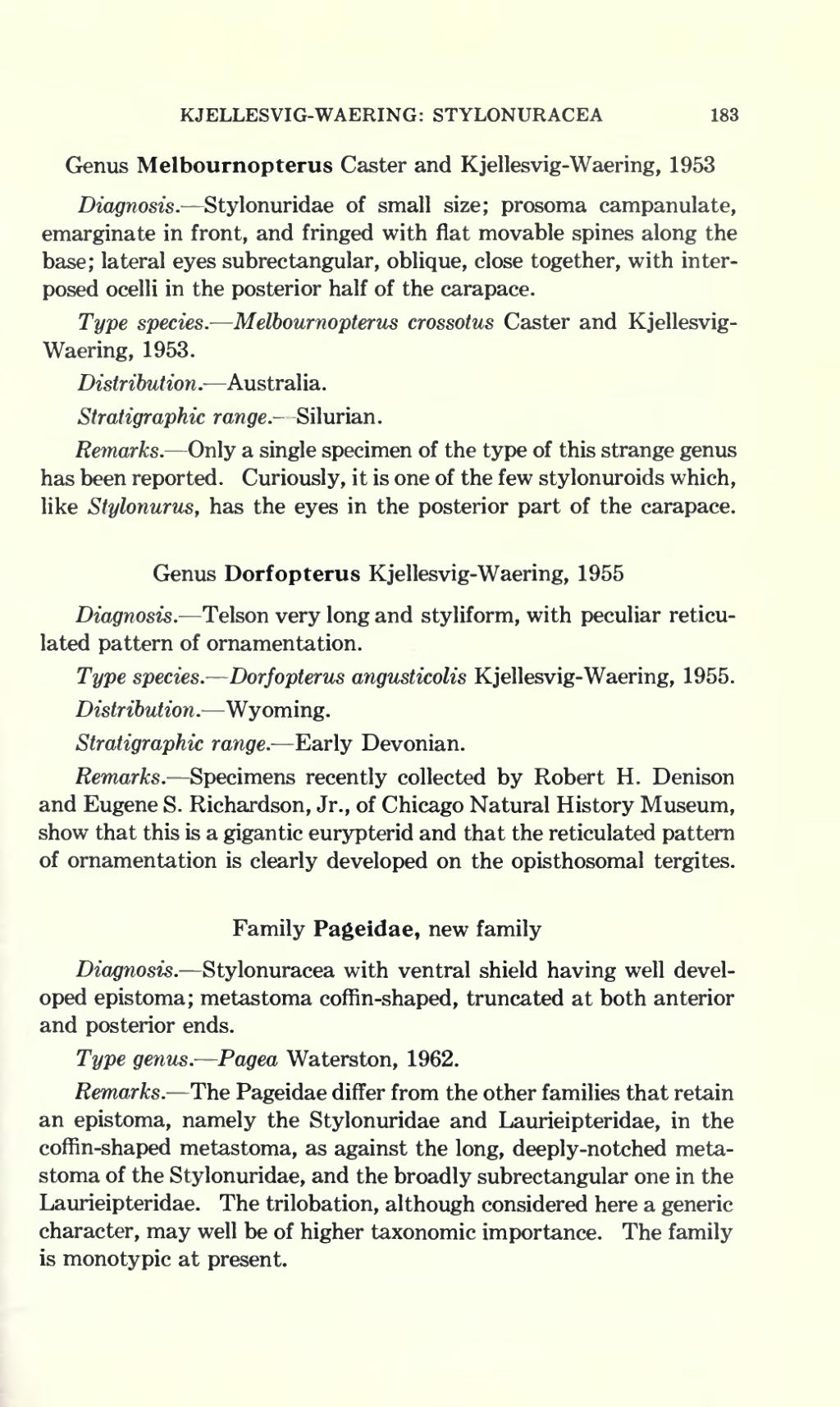Genus Melbournopterus Caster and Kjellesvig-Waering, 1953
Diagnosis.—Stylonuridae of small size; prosoma campanulate, emarginate in front, and fringed with flat movable spines along the base; lateral eyes subrectangular, oblique, close together, with interposed ocelli in the posterior half of the carapace.
Type species.—Melbournopterus crossotus Caster and Kjellesvig-Waering, 1953.
Distribution.—Australia.
Stratigraphic range.—Silurian.
Remarks.—Only a single specimen of the type of this strange genus has been reported. Curiously, it is one of the few stylonuroids which, like Stylonurus, has the eyes in the posterior part of the carapace.
Genus Dorfopterus Kjellesvig-Waering, 1955
Diagnosis.—Telson very long and styliform, with peculiar reticulated pattern of ornamentation.
Type species.—Dorfopterus angusticolis Kjellesvig-Waering, 1955.
Distribution.—Wyoming.
Stratigraphic range.—Early Devonian.
Remarks.—Specimens recently collected by Robert H. Denison and Eugene S. Richardson, Jr., of Chicago Natural History Museum, show that this is a gigantic eurypterid and that the reticulated pattern of ornamentation is clearly developed on the opisthosomal tergites.
Family Pageidae, new family
Diagnosis.—Stylonuracea with ventral shield having well developed epistoma; metastoma coffin-shaped, truncated at both anterior and posterior ends.
Type genus.—Pagea Waterston, 1962.
Remarks.—The Pageidae differ from the other families that retain an epistoma, namely the Stylonuridae and Laurieipteridae, in the coffin-shaped metastoma, as against the long, deeply-notched metastoma of the Stylonuridae, and the broadly subrectangular one in the Laurieipteridae. The trilobation, although considered here a generic character, may well be of higher taxonomic importance. The family is monotypic at present.
